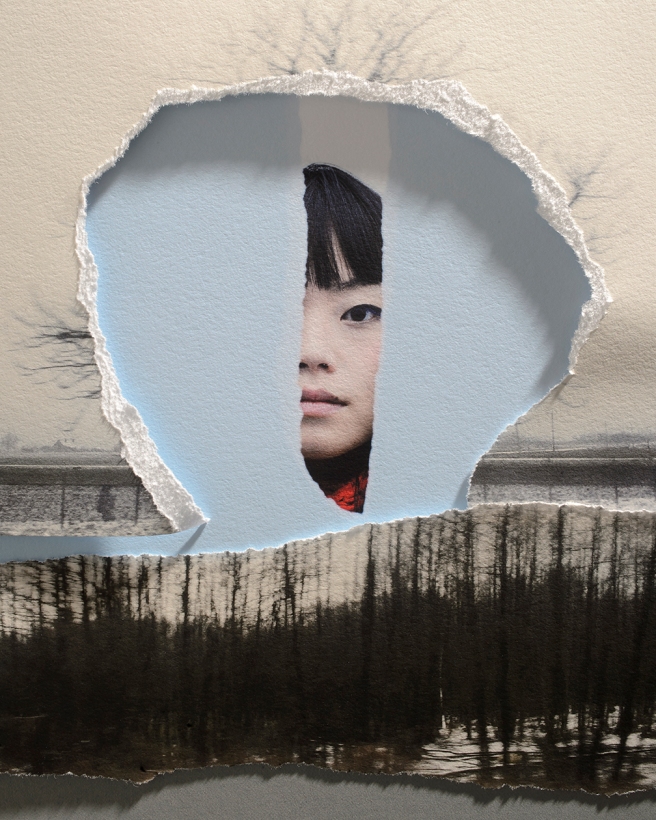I find Sylwia Kowalczyk’s work very inspiring and comparable (if quite dissimilar in appearance) to Georges Rousse’s work. Here, the art work overlaps in both cases to form a single piece except in Kowalczyk’s Lethe (2016) it is not practically seamless as the case is with Rousse’s. Rather Lethe is disjointed, using art from various sources and combining them in paper layers.
This disjointedness is presumably deliberately reflected in the torn edges being clearly visible at the seams where the image sources for Lethe overlap. I like this approach by Kowalczyk for Lethe because it admits that the art work is not a seamless integration into nature like Rousse’s. Instead it has imperfections that the artist reflects (the torn edges).
The aspects I could take away from Kowalczyk’s Lethe (2016) are the imperfections which I find intriguing and add character, while still being subtle enough to not detract from the overall image.

Rousse’s work probably takes more work as it is on a larger scale and it must be extremely difficult to make the various parts of the buildings he works in match up to form the illusion. However, I must admit I feel I appreciate Kowalczyk’s Lethe (2016) more. This is because the illusions for me only last for a small amount of time and are actually quite disparate. Instead I found myself admiring the juxtapositions of her work which admit this disparity and add meaning.

Kowalczyk’s paper layers add meaning in my eyes not just because of their content but because of their juxtapositions. In this way the separate images have context within the overall image/collage as well as in a broader context. On her website, Kowalczyk talks of ‘if we do not remember them [memories from childhood], perhaps these might as well not have happened in the first place.’ – (Kowalczyk, s.d.). Although this seems quite melancholy, it does make me look at the photographs that make up the torn-paper collage differently. Here, it could be seen that Kowalczyk remembers only fragments of her childhood. By piecing them together into disparate collages, she is able to form at least a semblance of important memories with perhaps new meaning.
References:
Kowalczyk, S. (2016) Lethe. [Photograph] Retrieved from: http://www.streetlevelphotoworks.org/product/ambit-3 (Accessed 13/02/2019).
Rousse, G. (2003). Rüsselheim 2003. [Photograph] Retrieved from: https://www.georgesrousse.com/en/archives/article/georges-rousse-in-ruesselsheim/ (Accessed 13/02/2019).
Kowalczyk, S. (s.d.). Lethe. At: http://www.sylwiakowalczyk.com/lethe-2 (Accessed 13/02/2019).

This is super stuff!
LikeLike
Thanks Sarah-Jane! I hope your editing of your essay is going well!
LikeLike